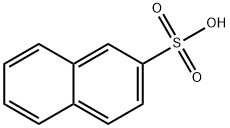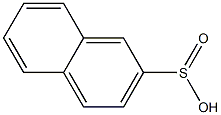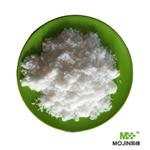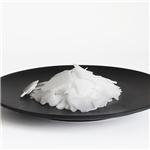Chemical Properties
Nondeliquescent, white plates.Soluble in water, alcohol, and ether. Combustible.
Uses
Starting point in the manufacture of β-naphthol,
β-naphtholsulfonic acid, β-naphthylaminesulfonic
acid, etc.
Uses
Naphthalene-2-sulfonic acid is used in making direct dyes, reactive des and employed as dye and agrochemical intermediates.
Definition
ChEBI: Naphthalene-2-sulfonic acid is a naphthalenesulfonic acid in which the sulfo group is linked to position 2 of the naphthalene ring. It has a role as an environmental contaminant and a xenobiotic.
Preparation
Naphthalene-2-sulfonic acid is prepared by sulfonation of naphthalene.
Step: With naphthalene as raw material, 98% sulfuric acid is used as sulfonating agent, and it is obtained by sulfonation at 160-166 ℃. During the sulfonation process, a small amount of α-naphthalenesulfonic acid by-product is generated. By heating, the unstable α-naphthalenesulfonic acid can be hydrolyzed at 140-150 °C to remove the sulfonic acid group, and become naphthalene and sulfuric acid. Naphthalene can be blown out. During the hydrolysis of naphthalene, a small amount of lye should be added to neutralize part of the sulfuric acid. It also acts with naphthalenesulfonic acid to form β-naphthalenesulfonic acid sodium salt crystals, which can be filtered to obtain the finished product of Naphthalene-2-sulfonic acid.
General Description
The fluorescence of 2-naphthalenesulfonic acid (NSA) is effectively quenched by colloidal silver via photoinduced interfacial electron transfer from the excited singlet of NSA to silver. Adsorption behavior of NSA on a conventional macroporous resin Amberlite XAD4 and hypercrosslinked resins NDA101 and NDA100 has been investigated.
Flammability and Explosibility
Non flammable
Purification Methods
Crystallise the acid from conc HCl. The S-benzylisothiuronium salt has m 192o (from aqueous EtOH). [Berger Acta Chem Scand 8 432 1954, Beilstein 11 H 171, 11 IV 527.]





